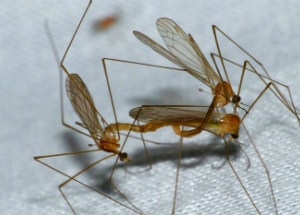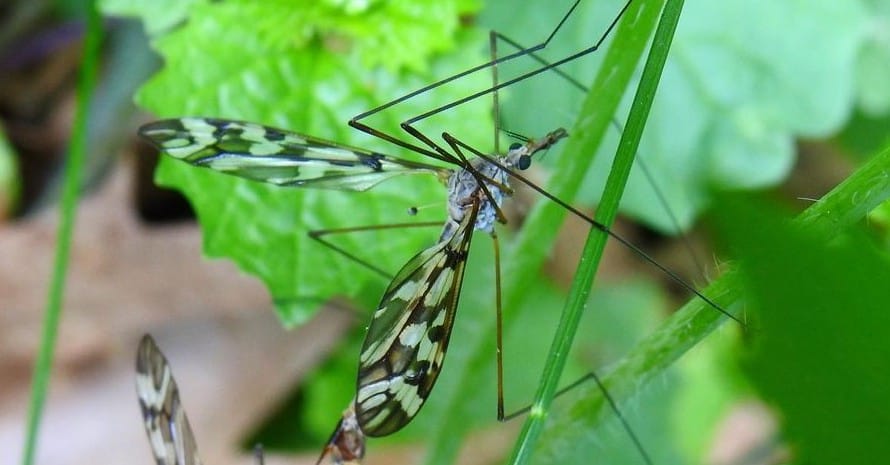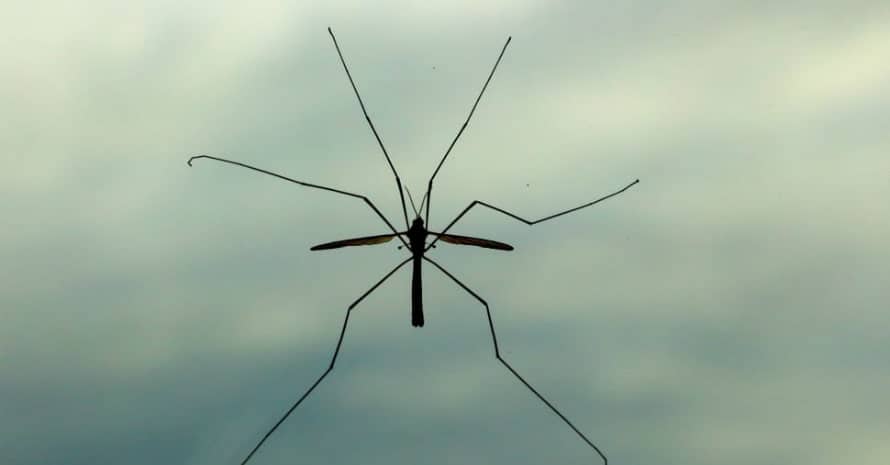This manual is for people who are wondering how to get rid of crane flies without calling pest control services. If your beautiful flowers, fruits, and crops are eaten by crane flies, you have to act immediately. Insecticides and natural predators like birds are the major fear of these insects.
Taking into consideration many years of my experience as an expert in entomology, together you will learn how to get rid of the crane flies and their harmful voracious larvae, also known as leatherjackets. Follow the guidance step by step and check out my top favorite insecticides which I find incredibly helpful.
[wpsm_titlebox title=”How to Get Rid of Crane Flies” style=”main”]
- Identify the insect. These flies bear some resemblance to mosquitoes.
- Use insecticides or repellents.
- Attract birds to your yard to scare away crane flies.
- Get rid of damp stains in the house.
- Mow your lawn on time.
- Clean your lawn from leftovers and wood.
[/wpsm_titlebox]
Buyer’s Guide and FAQ
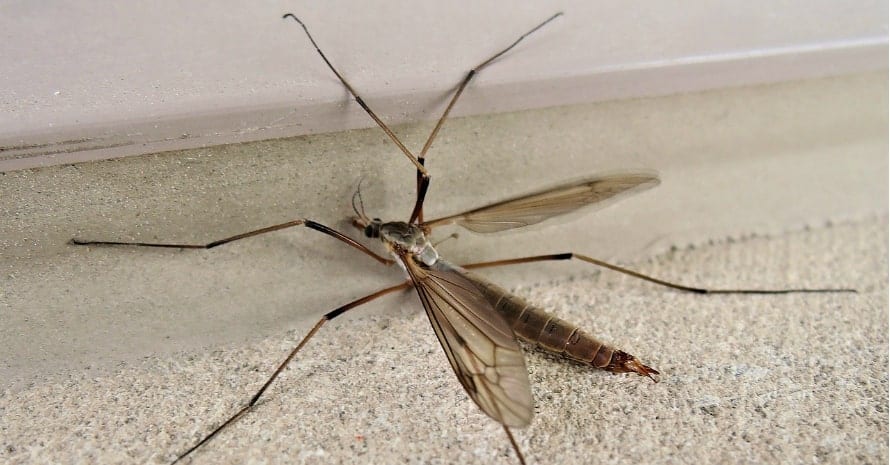
Adult crane flies do not cause any harm to your garden. Unlike their larvae, they don’t feed on flowers or crops. Crane fly is widespread around North America and Europe. More than 15 000 various species of these insects are officially found in the world.
Look
Crane flies look like mosquitos with large legs. Usually, they reach up to 2.5 inches in the wingspan. Insects can be red, yellow, gray, or brown. They have long antennae on their heads. Females look more vivid as they have to attract males. At the end of the abdomen, female species have ovipositors that look like a stinger. It does not sting and is made for laying eggs only.
Lifecycle
The most dangerous for your harvest is larvae, which appear from eggs that were laid in the soil. In 24 hours, larvae hatch from eggs. Usually, it happens in late summer. They look like worms and are known as leatherjackets. Larvae feed on plants and roots in the spring and fall. During the winter, they remain in the ground. In spring, they turn into pupae. And in summer or fall, adults appear from the pupae, finishing crane flies life cycle.

Crane flies vs. mosquito
Let’s start by reminding you that mosquitoes and crane flies are different species. Although these pests are sometimes called mosquito hawks, they have nothing to do with eating mosquitoes. The difference is obvious:
- An adult crane fly is harmless. It does not bite anyone despite its scary look. It has a similar to mosquito look, but that is all;
- A mosquito is way smaller than a crane fly. It reaches ¼ or ½ inches on average in length, while crane fly is 1 ¼ inches minimum, and some can even reach 3 inches;
- Crane flies have a long abdomen and long legs. This shape makes them poor fliers, constantly wobbling in the air. Mosquitoes move extremely quick and are good at flying;
- Mosquitoes sting. They transmit the various diseases to humans, including Malaria and West Nile virus.Crane flies do not bite and do not transmit anything;
- Larvae of these insects are herbivorous. They feed on plants. Crane flies feed on nectar most usually. After they mate, they die.
What attracts crane flies?
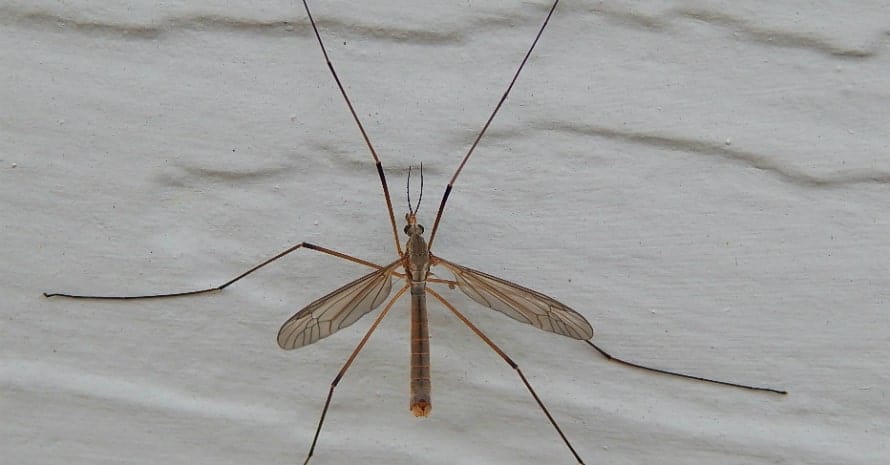
They may have lived in your yard for many months, but you did not notice. They appear from pupae, which were created from larvae. Larvae lived in the ground feeding on your crops. Larvae do not usually attract anyone’s attention. They rarely come out of the soil, and when they do that, they prefer to stay hidden, so they usually come out at night. What attracts mosquito hawks is:
- Water. The majority of infestation cases are noted right after the rainy seasons. These insects prefer moist soil for their eggs;
- Organic materials. Adult insects seek the soil rich in various organic materials, including compost, plants, people and animal waste, to lay their eggs;
- Flowers, plants, fruits, vegetables in your yard;
- Grown-up crane flies are attracted to light. They can fly to the big cities to live near the streetlights.
Getting Rid of Crane Flies: Step by Step Instruction
If you’re wondering how to get rid of mosquito hawks, here are simple steps that you have to follow. Before you do this, make sure you want to get rid of them. These insects do not cause any harm to humans, although they are not useful either.
Step 1. Identify your enemy
For newbies identifying the insects may be difficult at first. These flies have some similarities with mosquitoes, but they are not the same. To identify a crane fly, answer the question what does a crane fly look like:
- The size, which is definitely bigger than the mosquitoes’. While mosquitoes can fly almost unnoticed, it is hard to miss these flies, with their long legs and wings, which make them look like a spider that can fly;
- The body. It is slim and long. The legs do not press so close as mosquitoes’, and they are really long;
- The Mouth. These insects do not have any. If you were wondering what do crane flies eat, the answer is nothing. Adult crane flies do not eat, living only several days after they grow up from larvae.
Step 2. Identifying larvae
Identifying crane flies larvae is easy, as they look like worms. They are called leatherjackets. You can find them buried into the turfgrass and moist soil. They rarely come out, preferring to feed on the roots of plants. Yet, from time to time, they come out during the night to eat flowers, fruits, and veggies from your garden. Main features of larvae:
- Size is up to 1 inch;
- It does not have any legs;
- You can see the dark line of its gut;
- Lives in the moist soil;
- Its color is usually gray or greenish;
- Its body is segmented, fleshy, and plump.
Step 3. Crane flies measures
Your main enemy is leatherjackets that feed on your plants. You have to know what time of the year would crane flies come out, which is in summer after they are turned from larvae to adults. From the late summer to the late spring, you will have to deal with larvae. They will not live for more than several days.
- Insecticides. Check out whether it is good to kill larvae as well as adult species. Apply it all over your yard, especially in the moist areas. Insecticides that include imidacloprid, pyrethroid, neem oil cause paralysis of the pests, which leads to death. To prevent skin irritation or allergies, use protective gloves. Cover your eyes with glasses;
- Repellents. Can be used as preventive measures. Use crane fly repellent over the territory. It may be safer than insecticide for you, as you don’t have to get close to the insects’ habitat. Repellents contain similar chemicals to insecticides, however, they are already mixed with water and ready to apply;
- Natural predators. Birds feed on larvae. Attract birds in your yard to scare away crane flies. If you don’t mind sharing your yard with birds, you can install bird feeders. Provide fresh water for them. Be careful about attracting too many of them, as birds are even more dangerous for your harvest than crane flies.
Active ingredients in insecticides
The most popular options contain pyrethroids and imidacloprid as active ingredients. They can kill larvae in the soil. You may find them in granular or liquid forms. The best time to get rid of crane flies is the second part of summer and the beginning of fall.
Preventive measures
Once you have learned how to kill crane flies, you may feel relaxed. All the larvae were exterminated and you don’t feel a threat. However, now you have to ask how do you keep crane flies away:
- Check out the yard drains. Get rid of damp spots;
- Mow the lawn in time;
- Clean your lawn from leftovers and wood.
Top 2 Crane Fly Treatments
Here is my personal list of the most helpful remedies against these insects. Before you use them, you have to read the label on each bottle. If you have tried them before, express your opinion in the comments below.
1. Bifen IT Control Solutions Insecticide Concentrates – Fast and Working Remedy Against Crane Fly Infestation in House
[amazon box=”B003W0OVBE” template=”vertical” tracking_id=”how-to-get-rid-of-crane-flies-20″]
A concentrates by Bifen is widely known for its powerful actions towards crane flies, termites, and carpenter ants. So if you have not one but several pests in your yard, this savvy pack of 16 OZ will serve you splendidly. It contains bifenthrin among active ingredients. You have to keep the bottle far from children and pets.
Bifen is a well-known company that develops and sells insecticides for your garden. This time they offer multi insecticide tools. You may use this product both indoor and outdoor flies. To kill larvae, I suggest you mix 2 tablespoons of the insecticide with 32 oz of water.
| Pros: | Cons: |
|
|
2. BioAdvanced Complete Insect Killer – Kills Crane Fly Larvae and Adults Species
[amazon box=”B000BPD60A” template=”vertical” tracking_id=”how-to-get-rid-of-crane-flies-20″ button_text=”Check price on Amazon” button_detail=”https://shareasale.com/r.cfm?b=410159&u=2583381&m=43235&urllink=www%2Edomyown%2Ecom%2Fbayer%2Dadvanced%2Dcomplete%2Dinsect%2Dkiller%2Dfor%2Dsoil%2Dturf%2Dp%2D2979%2Ehtml&afftrack=how%20to%20get%20rid%20of%20crane%20flies” button_detail_text=”Check price on DoMyOwn”]
Specifications:
- Active ingredients: Imidacloprid 0.15% Beta-Cyfluthrin 0.05%
- Item Form: Granules
- Item Weight: 10 Pounds
- Product Dimensions: 14 x 10 x 2.5 inches
- Target pests: Ants, Fleas, Ticks, Grubs, Chinch Bugs, Mole Crickets, European crane fly larvae and others
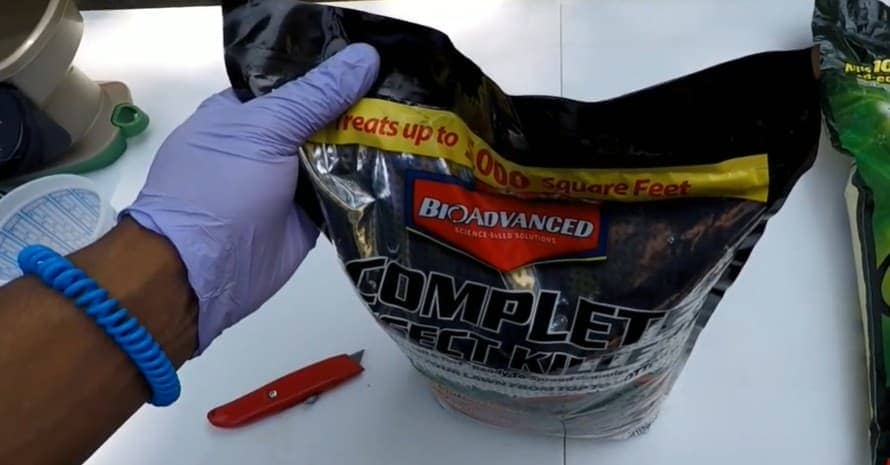
The insect killer by BioAdvanced offers to kill insects on the surface and in soil. It is helpful when it comes to killing mosquitoes, ants, bugs, ticks, fleas, crickets, and crane flies. Its active ingredients work great in soil and on the surface, which is suitable for larvae that live inside the ground, and species that fly above the ground. The killer stays active for 3 months.
BioAdvanced is a popular insecticide developer in the USA. The company sells both organic and chemical tools to treat pests. They offer a 10-pound bag of the product. This bag can be applied to 10000Sq Ft.
| Pros: | Cons: |
|
|
FAQ
Why do I have so many crane flies?
The most obvious answer is that your lawn is perfect for their habitat. They are attracted by fallen leaves and thick bushes in your yard. The lack of sun on it may be preferable as well.
[su_note note_color=”#dbe1d3″]Related Post: How to Get Rid of Cluster Flies[/su_note]
Do crane flies eat mosquitoes?
No, it is a common misunderstanding. Despite being called mosquito hawks, they do not eat mosquitoes. Moreover, adult species do not eat anything at all. And crane flies larvae are herbivorous.
Are crane flies attracted to light?
Yes, they are attracted to bright light. New York City even declared the severe infestation of crane flies a few years ago that was attracted to the street lights. You can also use light as a crane fly trap.
Are crane flies bad?
The adult insects are neither good nor bad. They are not useful for people, however, they do not cause any damage as well. Yet, their larvae feed on the plants in your garden.
Why do crane flies fly at your face?
It may look so, however, these insects do not have an intention to attack you. They simply see the light of your skin or the light behind you and are attracted to it.

To Kill or Not to Kill?
You don’t have to kill crane flies unless they do the damage to your garden or scare children in the house. You may start with preventive measures to stop the intrusion of these insects. This way, you will not have to get rid of them in the first place. I have mentioned two most powerful remedies.
Remember to wear a protective mask and gloves while you use one or both of them. If you used them before, let me know whether you liked them or not below this article. Have they helped you to get rid of crane flies?
References:
- The UC Guide to Healthy Lawns(University of California Agriculture & Natural Resources):
http://ipm.ucanr.edu/TOOLS/TURF/PESTS/incranelife.html - Crane Fly Larvae (Missouri Department of Conservation):
https://nature.mdc.mo.gov/discover-nature/field-guide/crane-fly-larvae - What’s Up With All the Crane Flies? (The University of Arizona):
https://news.arizona.edu/story/whats-all-crane-flies

